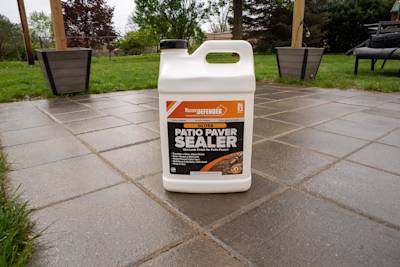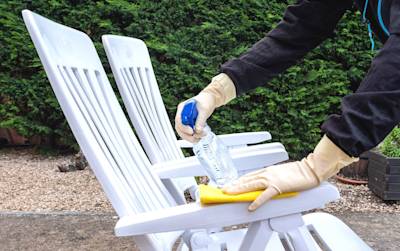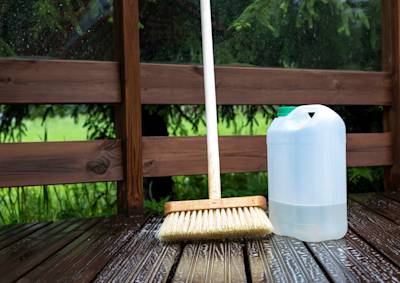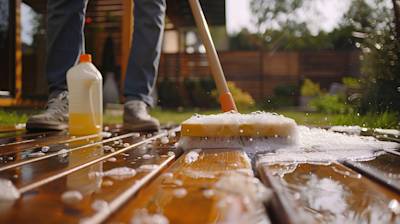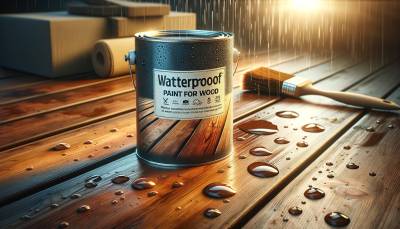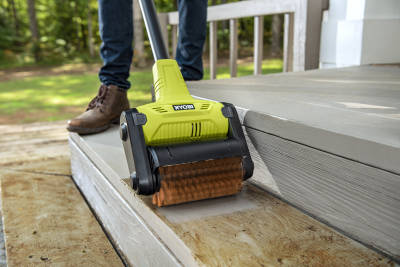Planning on making your last woodworking project last long? A wood sealer is a handywoodworking companion whose essence and functionality cannot be overemphasized. They form protective sealants on your wood surfaces, help combat mold and mildew growth, and preserve wood from excessive water damage. However, the choice of wood sealer significantly influences the durability, aesthetics, and overall finish of your project. This article delves into all you need to know about this essential woodworking element.
The Essence of a Wood Sealer
A wood sealer is basically a protective coat that keeps moisture out while preserving the natural beauty and characteristics of the wood. This sealant is a popular choice among many DIY enthusiasts and professional artisans, and here's why:
- They maintain the natural wood color, revealing its innate aesthetic appeal
- They prevent water absorption, warding off warping and rots
- They provide improved resistance against the elements, particularly UV rays and destructive insects
Types of Wood Sealers
With the extensive range of wood sealers available, choosing the right one can be quite tasking. Let's explore the different types of wood sealers you can opt for:
Water-Based Sealers
Water-based wood sealers are eco-friendly and easy to use, thanks to their low Volatile Organic Compounds (VOCs) levels. They dry relatively fast and are cleanable with water.
Solvent-Based Sealers
For a robust and exhaustive seal, solvent-based wood sealers are your go-to option. They're known for their long-lasting properties, offering impressive resistance against moisture, UV rays, and other harsh elements.
Varnish
Varnishes act as both a finish and a wood sealer, providing an excellent and lustrous finish on any woodworking project.
Oils
Penetrating oils, such as linseed and tung, seep deep into wood pores, providing internal and external protection. They enhance wood grains while offering adequate water resistance.
Application of Wood Sealers
How you apply your wood sealer, quite like the type of sealer used, significantly affects the durability and aesthetic appeal of your project. Here's a step-by-step guide through the process:
- Ensure the surface is clean and free from dust or dirt
- Apply the sealer evenly using a brush, roller, or sprayer
- Allow the first coat to dry based on the recommended time on the product instructions
- Gently sand the dried coat before applying subsequent coats
- Repeat the process until the desired level of protection is obtained
Considerations When Choosing a Wood Sealer
Choosing the right wood sealer for your project is key to obtaining the desired finish. Here are some factors you should consider:
- The nature of your project: Indoor projects may require different types of sealers compared to outdoor projects, due to exposure to different conditions
- The wood type: Different woods absorb sealers at varying rates. Hardwoods like oak and mahogany, for instance, absorb sealers slowly compared to softwoods like pine or spruce
- Your desired finish: If you prioritize beauty and luster, you might opt for sealers that enhance the appearance of your wood, like varnish or oil-based sealers
Perfecting your woodworking tasks implies paying attention to every detail - and sealing is as crucial as any other phase of your project. Remember, the right wood sealer not only beautifies your project but also ensures that it sustains its quality over an extended period.
Frequently Asked Questions about Wood Sealer
When should wood sealer be applied?
Wood sealers can be applied any time to new, dry, clean wood. However, it is best to apply wood sealer when the wood project is complete and ready for outdoor use. The optimal time is during warmer temperatures and clear weather conditions.
Does wood sealer change the colour of the wood?
Most wood sealers do not drastically change the wood's colour, they simply enhance it. Some sealers have slightly different tones though which may slightly tint the wood, giving it a richer, more enhanced appearance. Always do a patch test before applying to the entire piece.
How often should I apply wood sealer to my outdoor wood furniture?
Most experts recommend re-sealing your wooden outdoor furniture every year. It’s important to properly clean and dry your furniture before applying the wood sealer to ensure an even application.
Can I apply a wood sealer over paint or stain?
Yes, you can apply a wood sealer over paint or stain. But before applying wood sealer, it's important to ensure that the painted or stained surface is completely dry. If the surface isn't dry, the sealer might not adhere properly.
What is the best way to apply a wood sealer?
Wood sealer application methods can vary based on the type of sealer that you are using. You can apply it with a brush, roller, or sprayer. Be sure to read the manufacturer's instructions for specific recommendations.
Why is my wood sealer peeling?
Wood sealer might start peeling due to a number of factors, including improper application and the effects of environmental conditions. For instance, if the wood surface wasn't clean or was wet when the sealer was applied, it may peel. High humidity or temperature fluctuations can also lead to peeling.
Do I need to sand my wood before applying sealer?
Yes, it is advisable to sand your wood before applying sealer. Sanding will smooth the wood, open up the pores of the wood, and help the sealer to adhere better. This will result in a smoother finish and more effective sealing.
Can I use wood sealer on all types of wood?
Yes, wood sealer can be used on all types of wood. However, the type of sealer you choose may vary based on the specific characteristics of the wood, such as its hardness, grain pattern, and natural color.
How long does it take for wood sealer to dry?
The drying time of wood sealer can vary based on the type of sealer used, the thickness of the application, and the environmental conditions at the time of application. However, most wood sealers will dry to the touch within a few hours, and cure within 24-48 hours.
Why use wood sealer on outdoor furniture and structures?
Using wood sealer on outdoor furniture and structures is crucial to prolonging their lifespan. The sealer acts as a protective layer, shielding the wood from harmful UV rays, weather damage, mildew, and rot. Sealed wood will also retain its appearance and structural integrity for a longer period.
Pros and Cons of Wood Sealer
Pros of Wood Sealer
Enhances Wood Durability
- One of the primary advantages of wood sealer is the longevity it brings to wood surfaces. It protects the wood from various damage types, including rot, warping, and splitting caused by moisture exposure. This protection is incredibly beneficial for outdoor wood structures like decks and furniture exposed to changing weather conditions.
- An application of a wood sealer extends the lifespan of wood, reducing the frequency and cost of replacements.
Improves Aesthetic Value of Wood
- Wood sealers enhance the natural grain and color of wood. They offer several finishes, from matte to glossy, allowing users to choose a finish that best suits their preference and the nature of their project.
- Thus, wood sealers not only provide functional benefits but also beautify wood surfaces and enhance the overall look of various wooden items.
Provides UV Protection
- Exposure to the sun can discolor and degrade wood. Wood sealers often include agents that block harmful ultraviolet (UV) rays, thus protecting the wood surface from degradation and maintaining its natural color longer.
- UV-protective wood sealers are integral in maintaining the appearance of outdoor wood constructs such as sheds, fences, and decks.
Cons of Wood Sealer
Regular Reapplication Required
- Wood sealers require regular maintenance. While this product can protect wood from various external factors, its effectiveness typically wears off over time, necessitating reapplications. Outdoor wood constructs could require resealing every 1-2 years depending on the type of sealer used and the conditions the wood is subjected to.
- This reapplication frequency can entail considerable time and cost, especially for larger structures.
Challenging Application Process
- The process of applying wood sealer can be quite complex and time-consuming, particularly for novices. The wood surface needs to be properly prepared, which can include cleaning, sanding, and drying steps. The sealer itself must also be applied evenly to ensure a consistent finish.
- Areas for sealing can also be hard to reach or complex in shape, adding another layer of difficulty to the application process.
Limited Breathability
- While the protective layer formed by a wood sealer does an excellent job keeping out moisture, it also somewhat limits the wood’s natural ability to breathe. This means that if moisture is trapped within the wood when it's sealed, it can cause issues such as warping or rotting from the inside out.
- Therefore, it is crucial to ensure that the wood is thoroughly dry before applying a sealer.
Potential Environmental and Health Concerns
- Some wood sealers contain volatile organic compounds, often referred to as VOCs. These are solvents released into the air as the sealer dries. High levels of VOCs can contribute to air pollution and can cause health problems such as dizziness, breathing difficulties, or nausea in humans upon prolonged exposure.
- It’s advisable to look for wood sealers with low or zero VOC levels or use protective gear during application to alleviate related concerns.
Summary
There's no doubt that a wood sealer adds a layer of protection to any wooden piece, prolonging its life and maintaining its beauty. It prevents moisture, pests and harmful UV rays from deteriorating the wood. From wooden decks to antique furniture pieces, wood sealer can indeed work wonders.
Wood sealer is not just a protective coat, but also an enhancer. The right kind of sealer can bring out the color and texture of the wood. It can make an ordinary piece look extraordinary. So, it's safe to say - a fine piece of wooden furniture or a classic wooden deck isn't really complete without a quality wood sealer.
Application of wood sealer is an investment. It saves you time and money from future extensive repairs caused by wood damages. Plus, the peace of mind knowing that your cherished wooden pieces are shielded against any harmful elements is priceless. The bottom line is, wood sealer is essential for every wood owner who values their possessions.
About Grime Busters Pressure Washing
Welcome to Grime Busters Pressure Washing, your trusted team for all your pressure washing needs in Vancouver, WA. We're here to blast away all the grime and restore the shine on your property. From small residential projects to large commercial tasks, we handle it all. Our experienced professionals ensure every job is done meticulously to ensure the highest level of customer satisfaction. Specializing in a variety of services, including driveway, home exterior, commercial buildings, or large equipment washing, with us you can quickly amp up your curb appeal. Trust Grime Busters, we make it beautifully clean!
Tags: wood sealer, wood protection, home improvement,



